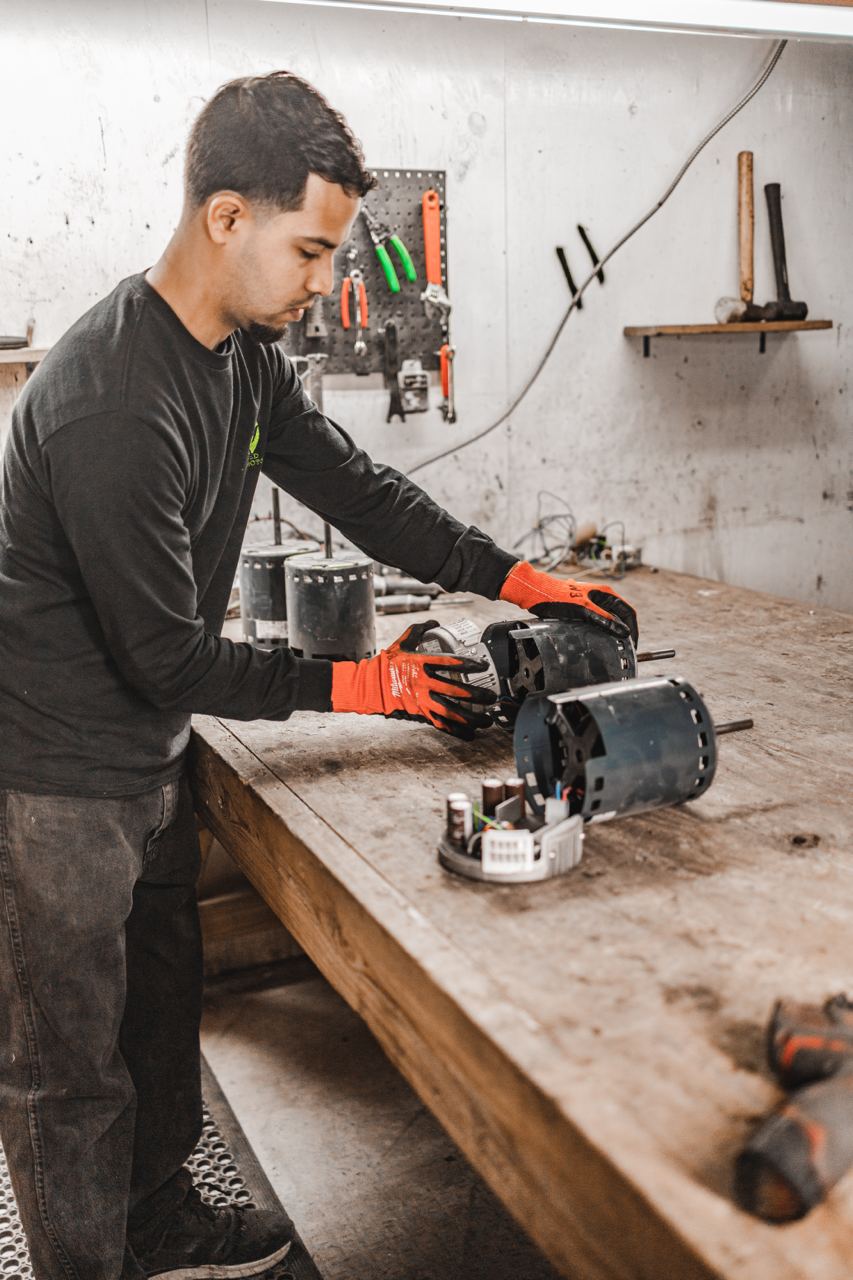(813) 440-8108

Key Components of an HVAC Blower Explained
Understanding the key parts of an HVAC blower motor and how they work together is essential for maintaining and troubleshooting your HVAC system. Each component plays a crucial role in ensuring that your system operates efficiently and effectively. This guide will provide an overview of the main parts of an HVAC blower motor and explain their functions.
Key Components of an HVAC Blower Motor and Their Functions
A well-functioning HVAC system is essential for maintaining a comfortable and healthy indoor environment. Central to this system is the blower motor, which plays a crucial role in circulating air throughout your home or building. Below is a detailed overview of the key components of an HVAC blower motor and how each contributes to the system's overall operation.
Motor Housing
Function: The motor housing encases the blower motor, protecting its internal components from dust, debris, and physical damage. It also helps in dissipating heat generated by the motor during operation.
Rotor and Stator
Rotor Function: The rotor is the rotating part of the motor that is connected to the blower fan. It turns when electrical current passes through the motor, driving the blower fan to move air.
Stator Function: The stator is the stationary part of the motor that creates a magnetic field when electrical current flows through it. This magnetic field interacts with the rotor, causing it to spin.
Fan Blades
Function: The fan blades, attached to the rotor, are responsible for moving air through the HVAC system. As the rotor spins, the fan blades rotate, pushing air into the ducts and distributing it throughout your home.
Bearings
Function: Bearings support the rotor and allow it to spin smoothly and with minimal friction. High-quality bearings reduce wear and tear on the motor and contribute to its longevity and quiet operation.
Capacitor
Function: The capacitor provides the necessary initial jolt of energy to start the blower motor and keeps it running efficiently. It stores and releases electrical energy to help the motor overcome inertia and begin spinning.
Wiring and Connectors
Function: Wiring and connectors transmit electrical power from the HVAC system to the blower motor. They ensure a stable and reliable electrical connection, enabling the motor to function correctly.
Motor Mounts
Function: Motor mounts secure the blower motor to the HVAC unit, reducing vibrations and noise during operation. They keep the motor in place and aligned properly within the system.
Control Board
Function: The control board regulates the operation of the blower motor, including its speed and timing. It receives signals from the thermostat and adjusts the motor's operation to meet the desired temperature settings.
Speed Controller (Variable-Speed Motors)
Function: In variable-speed motors, the speed controller adjusts the motor's speed based on the heating or cooling demand. This allows for more precise temperature control and energy efficiency.
👉🏻 Read More: How to Clean HVAC Blower Motor
How These Parts Work Together
When the thermostat signals the need for heating or cooling, the control board activates the blower motor. The capacitor provides an initial burst of energy to start the motor, which causes the rotor to spin within the magnetic field created by the stator.
As the rotor turns, the attached fan blades rotate, drawing air into the system and pushing it through the ducts.
The bearings support the rotor's rotation, ensuring smooth and efficient operation with minimal friction. The motor mounts secure the motor in place, reducing vibrations and noise.
The wiring and connectors supply continuous electrical power to the motor, while the control board and speed controller (in variable-speed models) regulate the motor's operation to maintain the desired indoor temperature.
👉🏻 Read More: Understanding the Different Types of Blower Motors for HVAC Systems
Conclusion
Each part of an HVAC blower motor plays a vital role in ensuring the efficient and effective operation of your heating and cooling system. Understanding these components and how they work together can help you maintain your system better and troubleshoot any issues that arise. Regular maintenance and timely replacement of worn-out parts can extend the lifespan of your blower motor and improve the overall performance of your HVAC system.
To explore high-quality blower motors and replacement parts that enhance your HVAC system’s performance, visit our website. Investing in the right components can prevent future issues and improve your home's comfort.

